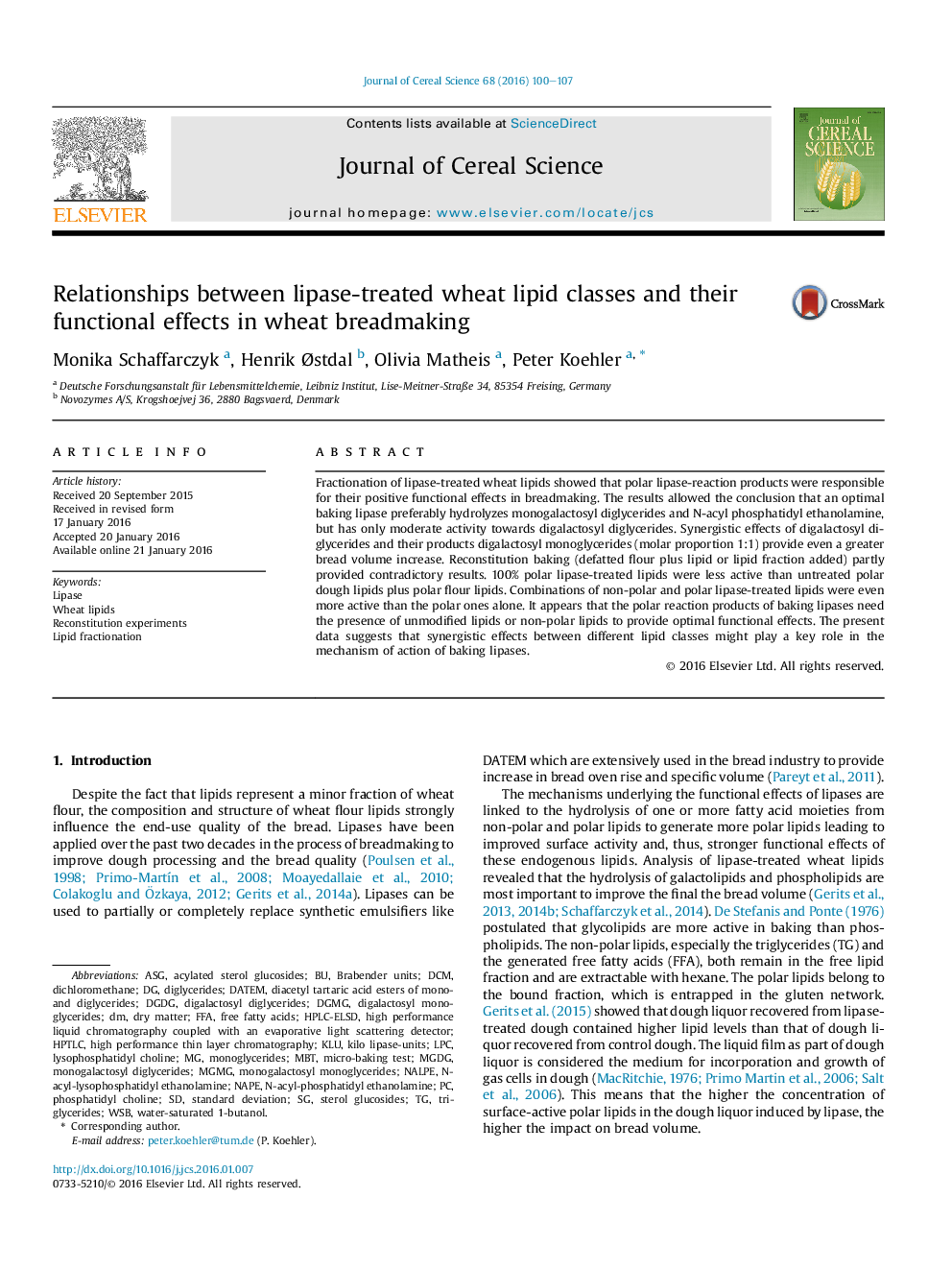| Article ID | Journal | Published Year | Pages | File Type |
|---|---|---|---|---|
| 6377713 | Journal of Cereal Science | 2016 | 8 Pages |
Abstract
Fractionation of lipase-treated wheat lipids showed that polar lipase-reaction products were responsible for their positive functional effects in breadmaking. The results allowed the conclusion that an optimal baking lipase preferably hydrolyzes monogalactosyl diglycerides and N-acyl phosphatidyl ethanolamine, but has only moderate activity towards digalactosyl diglycerides. Synergistic effects of digalactosyl diglycerides and their products digalactosyl monoglycerides (molar proportion 1:1) provide even a greater bread volume increase. Reconstitution baking (defatted flour plus lipid or lipid fraction added) partly provided contradictory results. 100% polar lipase-treated lipids were less active than untreated polar dough lipids plus polar flour lipids. Combinations of non-polar and polar lipase-treated lipids were even more active than the polar ones alone. It appears that the polar reaction products of baking lipases need the presence of unmodified lipids or non-polar lipids to provide optimal functional effects. The present data suggests that synergistic effects between different lipid classes might play a key role in the mechanism of action of baking lipases.
Keywords
Related Topics
Life Sciences
Agricultural and Biological Sciences
Agronomy and Crop Science
Authors
Monika Schaffarczyk, Henrik Ãstdal, Olivia Matheis, Peter Koehler,
